 Murder at the Royal Botanic Gardens (Wrexford & Sloane, #5) by Andrea Penrose
Murder at the Royal Botanic Gardens (Wrexford & Sloane, #5) by Andrea Penrose Format: ebook
Source: purchased from Amazon
Formats available: hardcover, paperback, ebook, audiobook
Genres: historical fiction, historical mystery
Series: Wrexford & Sloane #5
Pages: 353
Published by Kensington on September 28, 2021
Purchasing Info: Author's Website, Publisher's Website, Amazon, Barnes & Noble, Kobo, Bookshop.org, Better World Books
Goodreads
The upcoming marriage of the Earl of Wrexford and Lady Charlotte Sloane promises to be a highlight of the season, if they can first untangle--and survive--a web of intrigue and murder involving the most brilliant scientific minds in Regency London...
One advantage of being caught up in a whirl of dress fittings and decisions about flower arrangements and breakfast menus is that Charlotte Sloane has little time for any pre-wedding qualms. Her love for Wrexford isn't in question. But will being a wife--and a Countess--make it difficult for her to maintain her independence--not to mention, her secret identity as famed satirical artist A.J. Quill?
Despite those concerns, there are soon even more urgent matters to attend to during Charlotte and Wrexford's first public outing as an engaged couple. At a symposium at the Royal Botanic Gardens, a visiting botanist suffers a fatal collapse. The traces of white powder near his mouth reveal the dark truth--he was murdered. Drawn into the investigation, Charlotte and the Earl learn of the victim's involvement in a momentous medical discovery. With fame and immense fortune at stake, there's no shortage of suspects, including some whose ruthlessness is already known. But neither Charlotte nor her husband-to-be can realize how close the danger is about to get--or to what lengths this villain is prepared to go...
My Review:
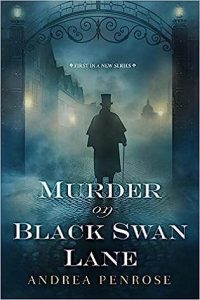 This fifth book in the Wrexford & Sloane series represents a kind of an ending. Absolutely not the ending of the series, as there are two books in the series after this one, Murder at the Serpentine Bridge and this year’s Murder at the Merton Library. And I sincerely hope there will be more after that.
This fifth book in the Wrexford & Sloane series represents a kind of an ending. Absolutely not the ending of the series, as there are two books in the series after this one, Murder at the Serpentine Bridge and this year’s Murder at the Merton Library. And I sincerely hope there will be more after that.
Nevertheless, Murder at the Royal Botanic Gardens, besides being at least one specific someone’s personal ending – after all, this is a murder mystery – still represents a kind of closure to the first part or cycle of the Wrexford & Sloane series, as so many of the chickens who were barely eggs in the first book, Murder on Black Swan Lane, come home to roost in this one.
It begins, as always, with a murder. A murder that we see – as we often do in this series – enough to be certain that it is foul play and not merely a natural death without being able to identify the perpetrator.
Who does a dastardly clever job of hiding their identity through most of the story. Meaning that this is one of those mysteries where I’m happy to say that I was every bit as confused about who really done what as Wrexford, Sloane and ALL of their friends and colleagues turned out to be.
It’s only the motive that’s clear from the very beginning. As they say, the love of money is the root of all evil, and this is a case where entirely too many someones are willing to do some very dastardly deeds in order to cultivate much deeper roots of the stuff.
This case is one that both Wrexford and Sloane had hoped to pass to their friend and colleague, Head Bow Street Runner Griffin, as they’re doing their damndest not to incite any more scandals in the final weeks before their wedding.
But once one of the many villains stirring this nefarious pot – or plot – directly threatens not just Charlotte Sloane but also her ‘weasels’ – her adopted sons Raven and Hawk – there is absolutely no way that Charlotte will let go of this case until her own personal nemesis is finally brought to justice.
One way or another.
Escape Rating B+: It’s probably not a surprise to anyone that I went looking for a comfort read to round out this week, BUT, perhaps I was just a bit too quick to pick this up as it’s been less than a month since I read the last Murder at Queen’s Landing. There are REASONS I try to keep them spaced apart.
Also, Charlotte has a lot of angsty thoughts in this one. Angst that is very real, completely understandable, and doesn’t come to pass in any of the worst ways that she fears, but still, a lot of angst. As she’s our point-of-view character, it meant that the story bogged down a bit when she got lost inside her head.
Still, there ARE reasons for that angst, and they all have to do with this book circling back to all the demons raised in Murder on Black Swan Lane and resolving them – one way or another. Charlotte’s whole, entire existence is about to change with her upcoming marriage to Wrexford and he’s the only part of that situation she’s certain about. She’s going to lose a lot of freedom when she becomes his Countess, not because he’ll clip her wings, but because society will be watching her every move. A position that she ran away from when she eloped with her first, entirely unsuitable husband and isn’t at all keen to return to.
Still, where a young, unmarried woman can ruin her reputation and her prospects all too easily, a wealthy, married, Countess will merely be considered eccentric – at least as long as no one susses out her secret identity as the satirical cartoonist A.J. Quill.
Charlotte began this series as an impoverished widow with two unofficially adopted guttersnipes, an ability to blend into the shadows as another guttersnipe right alongside them, a house on the edge of dilapidation and a secret identity barely keeping the not-nearly-well-enough-patched roof over their heads. But she was free. No one noticed her, either as a poor widow or in her masquerade as Magpie the dirty orphan boy.
Everything we learned about Charlotte has changed since that first story. She was disowned by her family, but her hoped-for reconciliation with her brother is in the offing. She was exiled from society, but her marriage to Wrexford will put her right back in the thick of it.
And one of the villains in that first adventure threatened her boys, nearly got her murdered, was responsible for the death of her husband – and got away scot-free. Now that villain is back and threatening Charlotte’s life and happiness yet again.
 Before Charlotte can be truly happy, all of those swords hanging over her head have to be carefully taken down, while she and Wrexford are in the midst of solving a criminal conspiracy that turns out to have more heads than Hydra. That the sheer tangle of threats coming their way makes both of them realize just how many hostages to fortune they have gathered around themselves over the course of their investigations adds to Charlotte’s worry and angst.
Before Charlotte can be truly happy, all of those swords hanging over her head have to be carefully taken down, while she and Wrexford are in the midst of solving a criminal conspiracy that turns out to have more heads than Hydra. That the sheer tangle of threats coming their way makes both of them realize just how many hostages to fortune they have gathered around themselves over the course of their investigations adds to Charlotte’s worry and angst.
But also to the relief when it all, finally manages to come round right.
While I may not have fallen head over heels into this entry in the series quite as much as I have the others, I still very much enjoyed the mystery, the way it tangled its roots in both the science AND the social issues of its day, and put paid to the ‘will they, won’t they’ question once and for all.
Which means I’ll be back, maybe not the very next time I need a comfort read but certainly the one after that, with the next book in the series, Murder at the Serpentine Bridge.

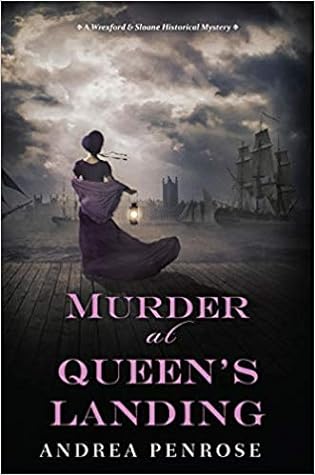 Murder at Queen's Landing (A Wrexford & Sloane Mystery, #4) by
Murder at Queen's Landing (A Wrexford & Sloane Mystery, #4) by 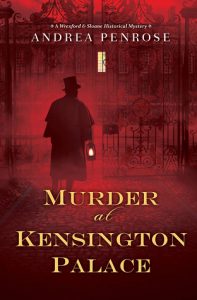 Escape Rating A: You wouldn’t think that it would be possible to make what is ultimately a financial crime be all that fascinating, but the machinations of arbitrage that turn out to be the center of this criminal conspiracy are both easy enough to follow and absolutely deadly in their application.
Escape Rating A: You wouldn’t think that it would be possible to make what is ultimately a financial crime be all that fascinating, but the machinations of arbitrage that turn out to be the center of this criminal conspiracy are both easy enough to follow and absolutely deadly in their application. Two final notes before I leave you to pick up the
Two final notes before I leave you to pick up the 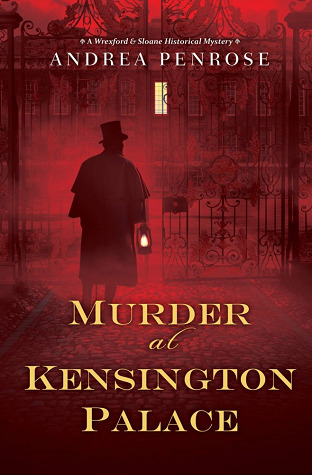 Murder at Kensington Palace (Wrexford & Sloane, #3) by
Murder at Kensington Palace (Wrexford & Sloane, #3) by 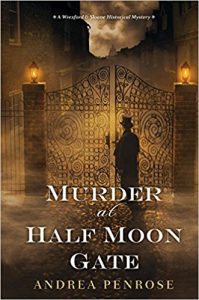 The murder that drags Wrexford and Sloane back into the fray after the events of
The murder that drags Wrexford and Sloane back into the fray after the events of 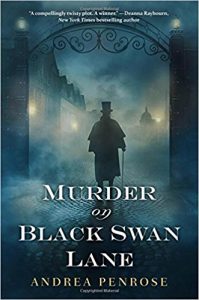 Escape Rating A-: I got into the
Escape Rating A-: I got into the 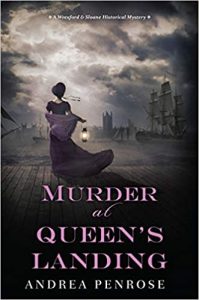 Because this case was steeped in those scientific questions, as well as the age-old question about the fine lines between genius and madness, and between interest and obsession. All the red herrings in this one, and there were many, had been electrocuted or charred to a crisp before presentation, making the solution seem just that much farther out of reach.
Because this case was steeped in those scientific questions, as well as the age-old question about the fine lines between genius and madness, and between interest and obsession. All the red herrings in this one, and there were many, had been electrocuted or charred to a crisp before presentation, making the solution seem just that much farther out of reach.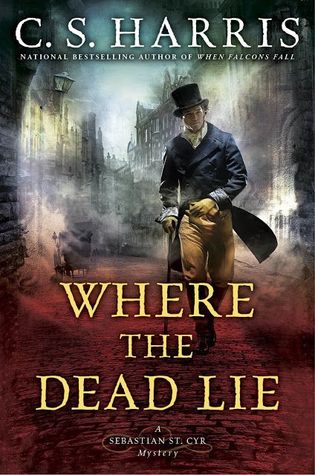 Where the Dead Lie (Sebastian St. Cyr, #12) by
Where the Dead Lie (Sebastian St. Cyr, #12) by 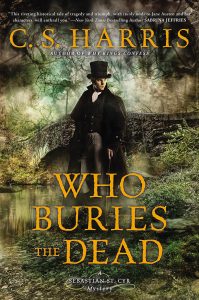 The dead lie in multiple meanings of the word AND in multiple places in this twelfth entry in the long-running, utterly marvelous
The dead lie in multiple meanings of the word AND in multiple places in this twelfth entry in the long-running, utterly marvelous 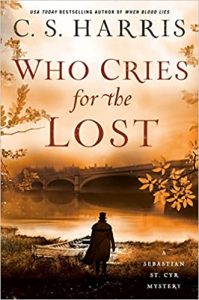 Escape Rating A-: This one is a really hard read. It’s excellent, just as the entire
Escape Rating A-: This one is a really hard read. It’s excellent, just as the entire 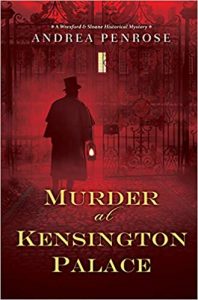 With one child’s, as well as their mother’s, tragedy yet to come in the later books in the series.
With one child’s, as well as their mother’s, tragedy yet to come in the later books in the series.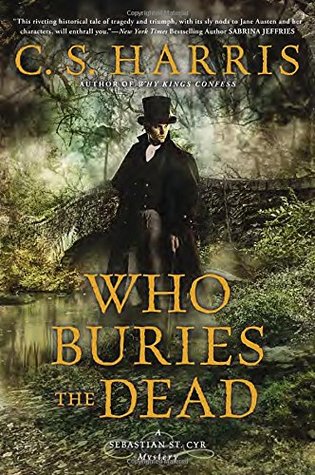 Who Buries the Dead (Sebastian St. Cyr #10) by
Who Buries the Dead (Sebastian St. Cyr #10) by 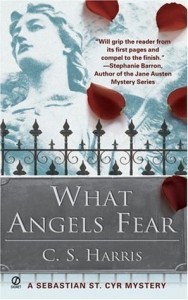 Whenever I flail around looking for a comfort read, I end up back in Regency England, following Sebastian St. Cyr, Viscount Devlin, as he investigates yet another murder that touches upon the high and mighty of his time and place – whether the high and mighty like it or not.
Whenever I flail around looking for a comfort read, I end up back in Regency England, following Sebastian St. Cyr, Viscount Devlin, as he investigates yet another murder that touches upon the high and mighty of his time and place – whether the high and mighty like it or not.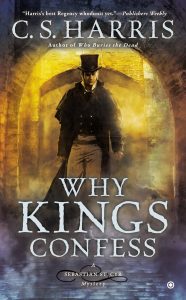 Escape Rating A-: I picked this up this week because yes, I was having a comfort read flail, and Sebastian St. Cyr always delivers – or rather whisks me away from my time to his. Which got me to thinking about the nature of comfort reads in general, and why this works for me in particular.
Escape Rating A-: I picked this up this week because yes, I was having a comfort read flail, and Sebastian St. Cyr always delivers – or rather whisks me away from my time to his. Which got me to thinking about the nature of comfort reads in general, and why this works for me in particular.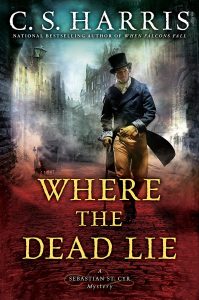 And that is most definitely a comfort to the reader. Or at least this reader.
And that is most definitely a comfort to the reader. Or at least this reader.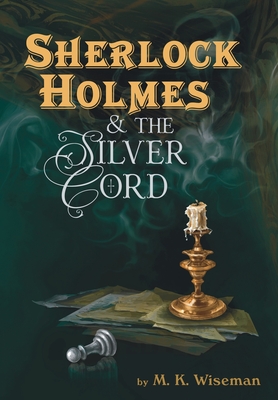 Sherlock Holmes & the Silver Cord by
Sherlock Holmes & the Silver Cord by 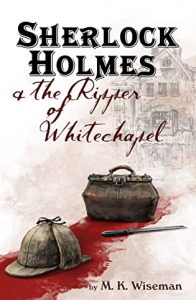 Which goes a long way towards explaining why this story, like the author’s previous forays into Holmes pastiches,
Which goes a long way towards explaining why this story, like the author’s previous forays into Holmes pastiches, 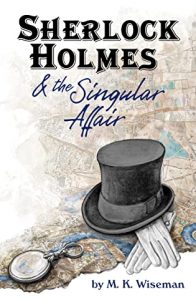 In the first outing,
In the first outing, 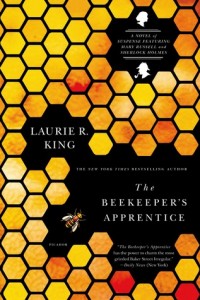 We don’t like to see our heroes stumble, and this is a story where Holmes is definitely stumbling – if only inside the confines of his own head. But seeing him trip over his own mental, spiritual and even moral feet makes him more human. Whether that’s a good take on the character or merely an unsettling one is left in the mind of the reader.
We don’t like to see our heroes stumble, and this is a story where Holmes is definitely stumbling – if only inside the confines of his own head. But seeing him trip over his own mental, spiritual and even moral feet makes him more human. Whether that’s a good take on the character or merely an unsettling one is left in the mind of the reader.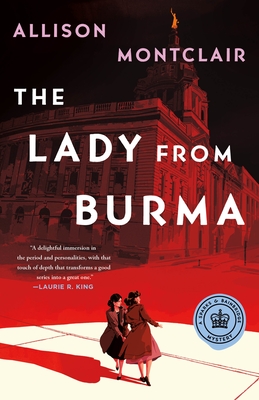 The Lady from Burma (Sparks & Bainbridge, #5) by
The Lady from Burma (Sparks & Bainbridge, #5) by 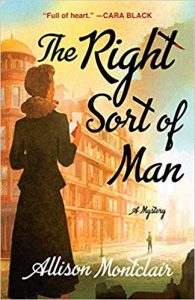 The course of true love never does run smooth, and the business of finding it even less so, especially when Sparks & Bainbridge mix the business of romance with the business of murder.
The course of true love never does run smooth, and the business of finding it even less so, especially when Sparks & Bainbridge mix the business of romance with the business of murder.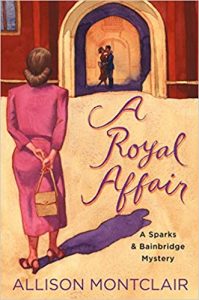 But Gwen is intimately acquainted with the circumstances that might drive someone to suicide, so, when a client presents themselves at the Right Sort Marriage Bureau, intending to contract for a search for her soon-to-be-widower, Gwen is suspicious that Adele Remagen is planning to take her own life before cancer takes it for her.
But Gwen is intimately acquainted with the circumstances that might drive someone to suicide, so, when a client presents themselves at the Right Sort Marriage Bureau, intending to contract for a search for her soon-to-be-widower, Gwen is suspicious that Adele Remagen is planning to take her own life before cancer takes it for her.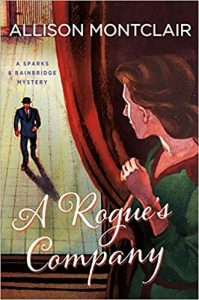 Escape Rating A: The Lady from Burma is a story about closings and openings. Mrs. Adele Remagen’s life is closing, and the top item on her ‘to-do’ list before she dies is to make sure that her beloved husband opens himself back up to the world after she’s gone.
Escape Rating A: The Lady from Burma is a story about closings and openings. Mrs. Adele Remagen’s life is closing, and the top item on her ‘to-do’ list before she dies is to make sure that her beloved husband opens himself back up to the world after she’s gone.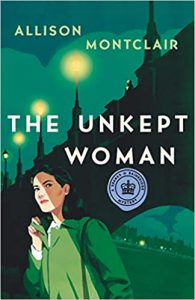 And in the middle of their personal sturm und drang, of which there is plenty on all sides, there’s the search for justice for Adele Remagen, and the grief of love lost that may never be found again.
And in the middle of their personal sturm und drang, of which there is plenty on all sides, there’s the search for justice for Adele Remagen, and the grief of love lost that may never be found again.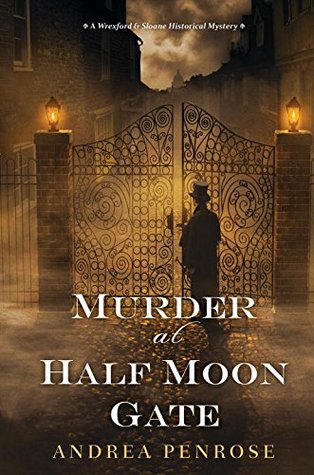 Murder at Half Moon Gate (A Wrexford & Sloane Mystery) by
Murder at Half Moon Gate (A Wrexford & Sloane Mystery) by 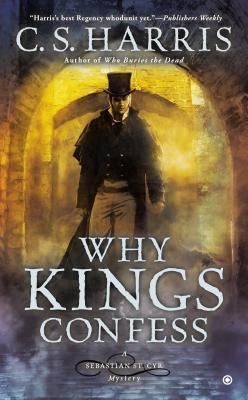 Why Kings Confess (Sebastian St. Cyr, #9) by
Why Kings Confess (Sebastian St. Cyr, #9) by 
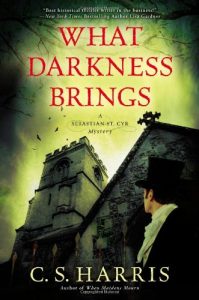 Escape Rating A-: This week already felt like a week and a half by the time I picked this book up on Wednesday – and there were still two days to go. I needed a comfort read, and it had been just long enough since I finished my previous
Escape Rating A-: This week already felt like a week and a half by the time I picked this book up on Wednesday – and there were still two days to go. I needed a comfort read, and it had been just long enough since I finished my previous 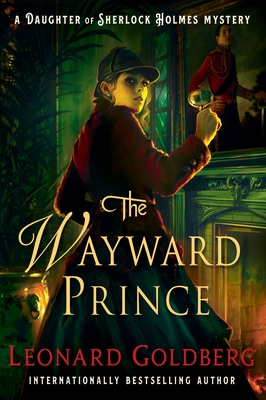 The Wayward Prince (The Daughter of Sherlock Holmes Mysteries, #7) by
The Wayward Prince (The Daughter of Sherlock Holmes Mysteries, #7) by  Escape Rating A-:
Escape Rating A-: